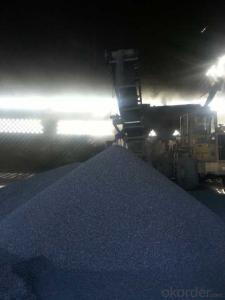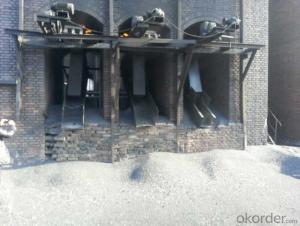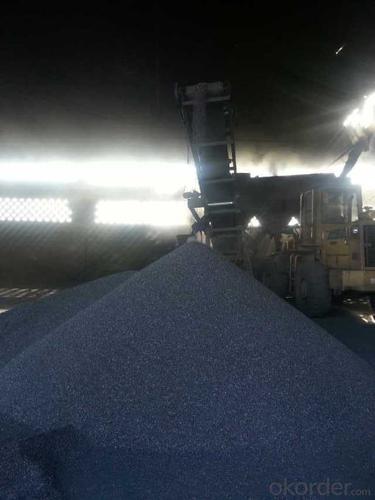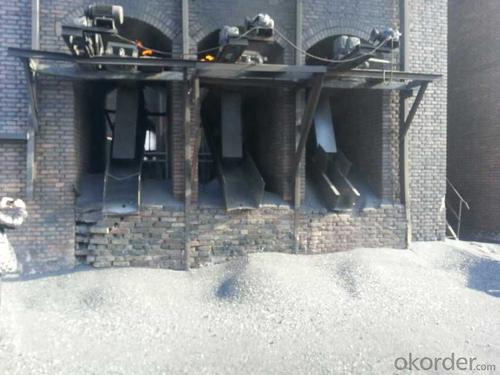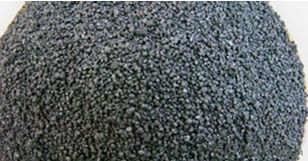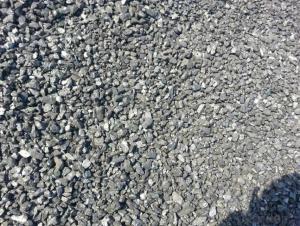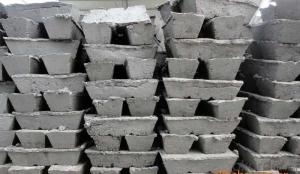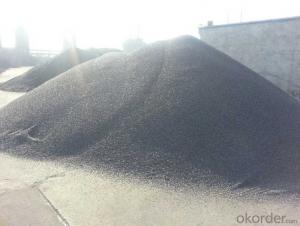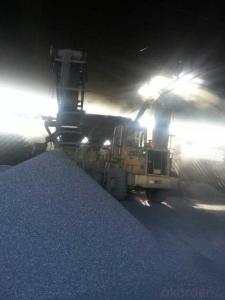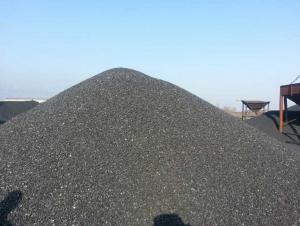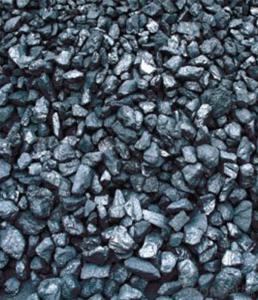Injection Carbon FC85 Originated in China
- Loading Port:
- Tianjin
- Payment Terms:
- TT OR LC
- Min Order Qty:
- 20 m.t.
- Supply Capability:
- 5000 m.t./month
OKorder Service Pledge
OKorder Financial Service
You Might Also Like
Packaging & Delivery
Injection Carbon FC85 Originated in China
25kgs/50kgs/1ton per bag or as buyer's request
Specifications
Injection Carbon FC85 Originated in China
Calcined Anthracite
S: 0.5% max
Size: 0-3. 3-5.3-15 or as request
Injection Carbon FC85 Originated in China
It used the high quality anthracite as raw materials through high temperature calcined at over 2000 by the DC electric calciner with results in eliminating the moisture and volatile matter from anthracite efficiently, improving the density and the electric conductivity and strengthening the mechanical strength and anti-oxidation. It has good characteristics with low ash, low resistvity, low sulphur, high carbon and high density. It is the best material for high quality carbon products.
Advantage and competitive of caclined anthracite:
Injection Carbon FC85 Originated in China
1. strong supply capability
2. fast transportation
3. lower and reasonable price for your reference
4.low sulphur, low ash
5.fixed carbon:95% -90%
6..sulphur:lower than 0.3%
General Specification of Calcined Anthracite:
Injection Carbon FC85 Originated in China
| FC | 90 | 88 | 85 | 83 | 82 |
| ASH | 8.5 | 10 | 12 | 14 | 15 |
| V.M. | 1.5 | 2 | 3 | 3 | 3 |
| S | 0.35 | 0.5 | 0.5 | 0.5 | 0.5 |
| MOISTURE | 0.5 | 1 | 1 | 1 | 1 |
Pictures
Injection Carbon FC85 Originated in China
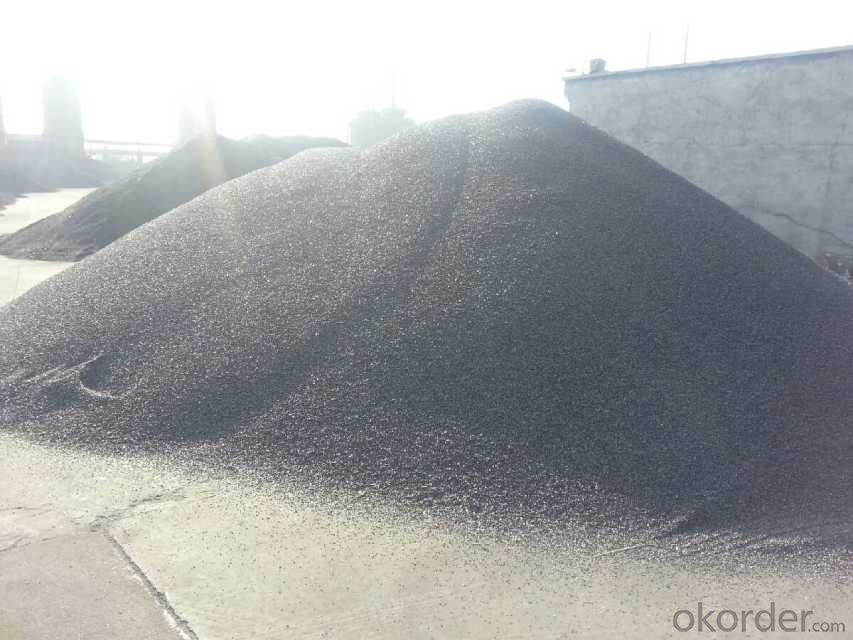
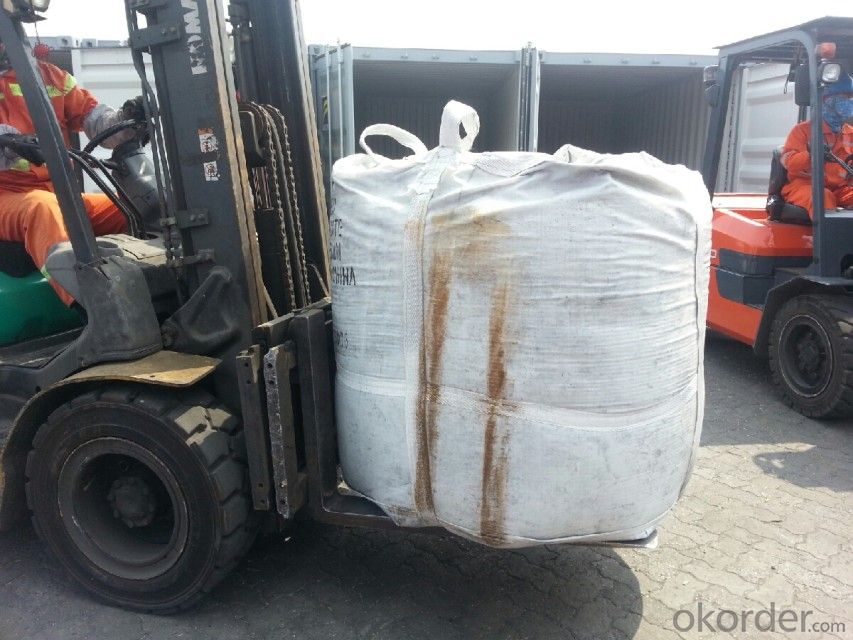
FAQ:
Why we adopt carbon additive?
Carbon Additives used as additive in steel making process. It made from well-selected Tai Xi anthracite which is low in content of ash, sulphur, phosphorus, high heat productivity, high chemically activation.
Mainly industry property of it is: instead of traditional pertroleum coal of Carbon Additives, reduce the cost of steelmaking.
- Q: How does carbon dioxide affect fuel efficiency?
- Carbon dioxide does not directly affect fuel efficiency. However, the burning of fossil fuels, which releases carbon dioxide, contributes to global warming and climate change. These environmental impacts can lead to stricter regulations on fuel efficiency and encourage the development of more efficient and cleaner energy sources.
- Q: What is the difference in carbon content of low carbon steel, medium carbon steel and high carbon steel?
- Carbon content of low carbon steel (AISI1005 ~ 1026) is 0.06% to 0.28%, manganese content is 0.25% to 1%, phosphorus content is not more than 0.04%, sulfur content is not more than 0.05%.
- Q: How is carbon used in the production of solar cells?
- Solar cells do not directly utilize carbon in their production. Instead, semiconductor materials like silicon or cadmium telluride are typically used to create solar cells. Nevertheless, carbon-based materials can greatly enhance the efficiency and effectiveness of solar cells. Carbon, in the form of carbon nanotubes, can be employed as a see-through electrode within solar cells. Carbon nanotubes possess exceptional electrical conductivity and optical transparency, making them an ideal substitute for conventional transparent conductive materials such as indium tin oxide. Moreover, carbon-based materials can serve as a protective coating or encapsulation layer, safeguarding solar cells against moisture, corrosion, and mechanical strain. Carbon-based materials also have the potential to revolutionize solar cell technology by contributing to the development of cutting-edge solar cell types such as organic solar cells or perovskite solar cells. These advanced solar cells utilize carbon-based compounds in their active layers. In summary, although carbon is not directly involved in the production of solar cells, it plays a critical role in enhancing their performance and enabling the progress of more sophisticated solar cell technologies.
- Q: What is a carbon free martensite?
- Common martensite in iron based alloys, the essence of carbon and alloy elements (or) in alpha iron in the supersaturated solid solution. The iron carbon alloy is two yuan, carbon in alpha iron in the supersaturated solid solution.
- Q: Where are carbon fiber sheets and carbon fiber sheets used?
- Carbon fiber is an inorganic material with good rigidity and heat resistance. Carbon fiber resin composite is a kind of plastic. It is easy to process and belongs to excellent plastics in plastics.Compared with steel, carbon fiber has the greatest advantages of low density, high strength, corrosion resistance and so on. But there are also shortcomings, the biggest drawback is poor processability. It's usually a molding (hand, roll, winding, molding and pultrusion).Carbon fiber is a brittle material, but it has high strength and is usually not used alone. But as a fiber reinforcement, it can be added to the resin matrix to improve the properties of the resin and become a high-performance composite.
- Q: Joint carbide gas incident
- The Central Bureau of investigation in India after the disaster had 12 official allegations, including the Union Carbide (India) Co., Ltd. India 8 executives when he was chairman of Warren Anderson and company, two small companies and the company itself and under the. The 1 indicted India executives have been killed, the court 7 days to negligence causing death sentence the remaining 7 India nationals guilty, including the then Indian president Keshub Mahindra is more than 70 years old, many people. According to the charges, they will be sentenced to two years in prison at most. Survivors of the gas leak and their families and local activists gathered in front of the court 7 days ago, holding banners protesting the punishment of the perpetrators too light and late. Since the conviction was made in a local court in India, the defendant had the right to appeal to a higher court, and it was estimated that the process would continue for several years. After the disaster, Anderson, the American boss of the company, returned home soon. Now he lives in New York. In July last year, the court issued an arrest warrant for Anderson, but it has not been mentioned below.
- Q: How accurate is carbon dating?
- The scientific method known as carbon dating, or radiocarbon dating, is widely used to determine the age of organic materials that are up to 50,000 years old. It relies on measuring the ratio of radioactive carbon-14 (C-14) to stable carbon-12 (C-12) in a sample. Carbon dating has proven to be highly accurate, with a small margin of error. Its accuracy depends on factors such as the quality and preservation of the sample, the precision of measurement instruments, and understanding the carbon cycle in the past. However, carbon dating has limitations. It can only be used on organic materials that were once alive, so it is not applicable to dating inorganic materials like rocks or minerals. It is most effective for samples younger than 50,000 years old because the amount of C-14 decreases over time, making accurate measurement more challenging. To ensure accuracy, scientists often use multiple dating methods or cross-reference results with other independent techniques. This helps to verify the reliability of carbon dating and gain a more comprehensive understanding of the sample's age. Advancements in technology and calibration methods have improved the accuracy of carbon dating. For example, Accelerator Mass Spectrometry (AMS) allows for smaller sample sizes and greater measurement precision, reducing the margin of error. Calibration curves based on tree rings, or dendrochronology, also refine the accuracy of carbon dating. While carbon dating is highly reliable, it is important to recognize that no dating technique is perfect. All scientific dating methods have inherent limitations and uncertainties. However, with proper calibration and careful analysis, carbon dating remains one of the most accurate ways to determine the age of organic materials.
- Q: What are the impacts of carbon emissions on ecosystems?
- Carbon emissions have significant impacts on ecosystems, and these effects can be seen across various levels of the food chain. One of the major impacts is the alteration of the climate, as carbon emissions contribute to global warming and climate change. This change in temperature and weather patterns can disrupt ecosystems and lead to the loss of biodiversity. Increased carbon emissions also contribute to ocean acidification, which is the absorption of carbon dioxide by seawater, leading to a decrease in pH levels. This can have detrimental effects on marine life, particularly organisms with calcium carbonate shells such as corals, mollusks, and certain plankton species. As the acidity of the oceans increases, it becomes more challenging for these organisms to form and maintain their protective shells, leading to a decline in their populations. Furthermore, carbon emissions can impact the distribution and behavior of species. As temperatures rise, certain habitats become unsuitable for some species, forcing them to migrate or adapt to new conditions. This can disrupt the delicate balance of ecosystems, as some species may struggle to find adequate resources or may face increased competition for limited resources in their new habitats. Another significant impact of carbon emissions on ecosystems is the increased frequency and intensity of extreme weather events such as hurricanes, droughts, and wildfires. These events can lead to habitat destruction, loss of vegetation, and displacement of species, ultimately affecting the overall health and stability of ecosystems. Overall, carbon emissions have profound and far-reaching impacts on ecosystems. It is essential to reduce these emissions and transition to cleaner energy sources to mitigate these effects and protect the delicate balance of our natural world.
- Q: What kinds of carbon black paper do you have?
- ?Five. Characteristics of carbonless copy paperWhen carbon copy is made, no carbon paper is needed, direct writing is convenient and time saving, and the carbon copy number is 2-6 pages, and the electric printing 2-10 pages can greatly improve work efficiency and meet the needs of modernization.The copy is legible, bright, and does not fade. It can be altered or copied.Do not pollute fingers, clothing and other stationery, paper, and keep it clean.Having a variety of colors and easily identifiable.Paper is excellent, smooth and smooth surface, stronger than 28 grams of colored paper, not easy to damage, printing bright colors.No harmful raw materials and peculiar smell, safe and reliable, color and picture can be preserved for more than 15 years.
- Q: What is carbon neutral energy?
- Carbon neutral energy refers to energy sources that do not release carbon dioxide (CO2) into the atmosphere when they are used. It is a concept that aims to minimize the negative impact of energy production on the environment and climate change. Carbon neutral energy can be achieved through various means, such as renewable energy sources like solar, wind, hydro, and geothermal power, which do not produce CO2 emissions during operation. Additionally, carbon neutral energy can also be obtained by using fossil fuels in combination with carbon capture and storage (CCS) technologies, where the CO2 emitted during combustion is captured and stored underground, preventing it from entering the atmosphere. The goal of carbon neutral energy is to reduce greenhouse gas emissions and mitigate the effects of climate change, making it a crucial step towards a sustainable and cleaner future.
Send your message to us
Injection Carbon FC85 Originated in China
- Loading Port:
- Tianjin
- Payment Terms:
- TT OR LC
- Min Order Qty:
- 20 m.t.
- Supply Capability:
- 5000 m.t./month
OKorder Service Pledge
OKorder Financial Service
Similar products
Hot products
Hot Searches
